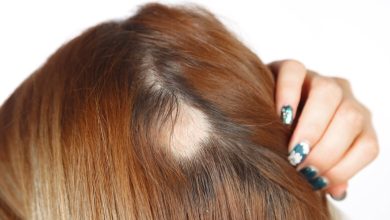Laser Treatment for Varicose Veins
Introduction
Varicose veins are a common vascular condition characterized by enlarged, twisted veins that often appear blue or dark purple. They primarily affect the legs and feet, and their appearance is associated with discomfort, pain, and in some cases, serious health complications. Laser treatment has emerged as an effective method for managing varicose veins, offering a minimally invasive alternative to traditional surgical options. This article explores the mechanism, benefits, procedures, and considerations related to laser treatment for varicose veins.
Understanding Varicose Veins
Varicose veins occur when the valves within the veins become weakened or damaged, leading to improper blood flow. This results in blood pooling within the veins, causing them to swell and become visible beneath the skin. Contributing factors include genetic predisposition, age, prolonged standing, obesity, and hormonal changes.
Laser Treatment Overview
Laser treatment for varicose veins, also known as endovenous laser therapy (EVLT) or endovenous laser ablation (EVLA), uses laser energy to target and close off problematic veins. The procedure involves inserting a thin laser fiber into the affected vein, which then emits laser energy to heat and seal the vein. Over time, the treated vein is absorbed by the body, reducing symptoms and improving appearance.
Procedure
-
Preparation: Before the procedure, a thorough evaluation is conducted, including an ultrasound examination to assess the extent and location of the varicose veins. This helps in planning the treatment and ensuring its effectiveness.
-
Local Anesthesia: The procedure is performed under local anesthesia, which numbs the area around the vein but allows the patient to remain awake and alert. This minimizes discomfort and reduces recovery time.
-
Laser Fiber Insertion: A small incision or needle puncture is made near the vein, through which a thin laser fiber is inserted. The fiber is carefully threaded into the vein using ultrasound guidance to ensure precise placement.
-
Laser Energy Application: Once in position, the laser fiber emits energy that heats the vein’s interior. This heat causes the vein wall to collapse and seal shut. As the vein is treated, the fiber is slowly withdrawn.
-
Post-Treatment: After the procedure, a compression bandage or stocking is applied to support the treated area and promote proper healing. Patients are generally encouraged to walk immediately after the treatment to enhance circulation.
Benefits of Laser Treatment
-
Minimally Invasive: Laser treatment is less invasive compared to traditional surgical methods, which often involve larger incisions and longer recovery times. The minimally invasive nature of the procedure results in less discomfort and a quicker return to normal activities.
-
Effectiveness: Studies have shown that laser treatment is highly effective in closing varicose veins and alleviating symptoms. It provides significant improvement in both cosmetic appearance and functional outcomes.
-
Reduced Risk of Complications: The risk of complications associated with laser treatment is relatively low. Unlike traditional surgery, there is less risk of infection, bleeding, or deep vein thrombosis.
-
Quick Recovery: Patients typically experience a faster recovery compared to traditional vein surgery. Most individuals can resume normal activities within a few days and return to work soon after the procedure.
-
Minimal Scarring: The small incisions or needle punctures used during laser treatment generally result in minimal scarring. This contributes to a more aesthetically pleasing outcome.
Considerations and Aftercare
-
Pre-Treatment Preparation: Patients may need to avoid certain medications or supplements that could increase bleeding risk. It is essential to follow the pre-treatment guidelines provided by the healthcare provider.
-
Post-Treatment Care: Adherence to post-treatment instructions, such as wearing compression stockings and engaging in light physical activity, is crucial for optimal results. Patients should also avoid prolonged standing or sitting for extended periods.
-
Potential Side Effects: While rare, some individuals may experience side effects such as bruising, swelling, or skin sensitivity. These are typically temporary and resolve on their own. In rare cases, more serious complications like skin burns or nerve damage may occur, but these are uncommon.
-
Follow-Up: Regular follow-up appointments are essential to monitor the healing process and ensure that the varicose veins have been effectively treated. Ultrasound evaluations may be conducted to assess the success of the procedure.
Alternative Treatments
While laser treatment is highly effective, it is not the only option for managing varicose veins. Other treatments include:
-
Sclerotherapy: Involves injecting a solution into the affected veins, causing them to collapse and be reabsorbed by the body. It is often used for smaller veins and spider veins.
-
Radiofrequency Ablation: Similar to laser treatment, this method uses radiofrequency energy to heat and close off the problematic veins.
-
Traditional Surgery: Surgical options such as vein stripping or ligation are more invasive and typically reserved for severe cases or when other treatments are not suitable.
Conclusion
Laser treatment for varicose veins represents a significant advancement in the field of vascular medicine. Its minimally invasive nature, coupled with its effectiveness and quick recovery, makes it an attractive option for individuals seeking relief from varicose veins. As with any medical procedure, it is essential to consult with a qualified healthcare professional to determine the most appropriate treatment based on individual circumstances. By understanding the benefits, procedure, and considerations associated with laser treatment, patients can make informed decisions and achieve optimal outcomes for their vascular health.




